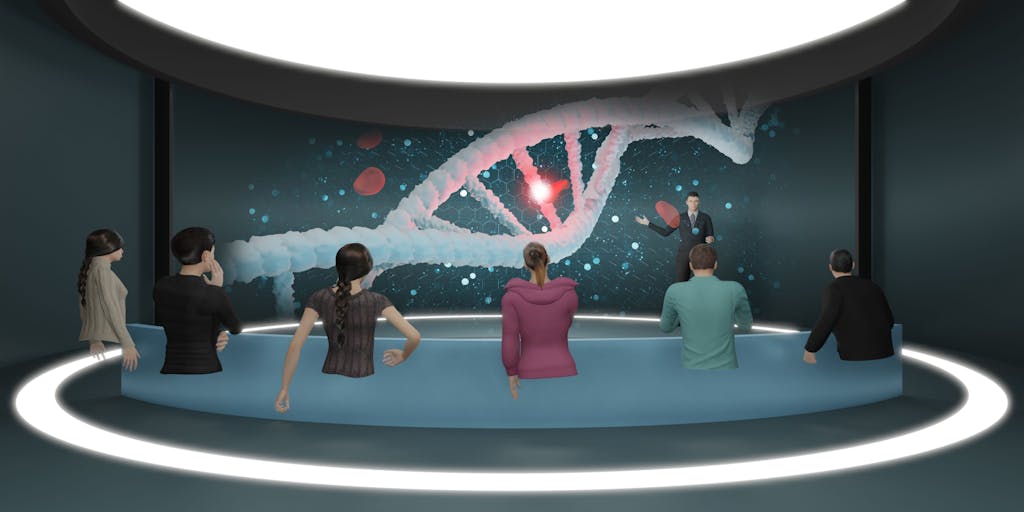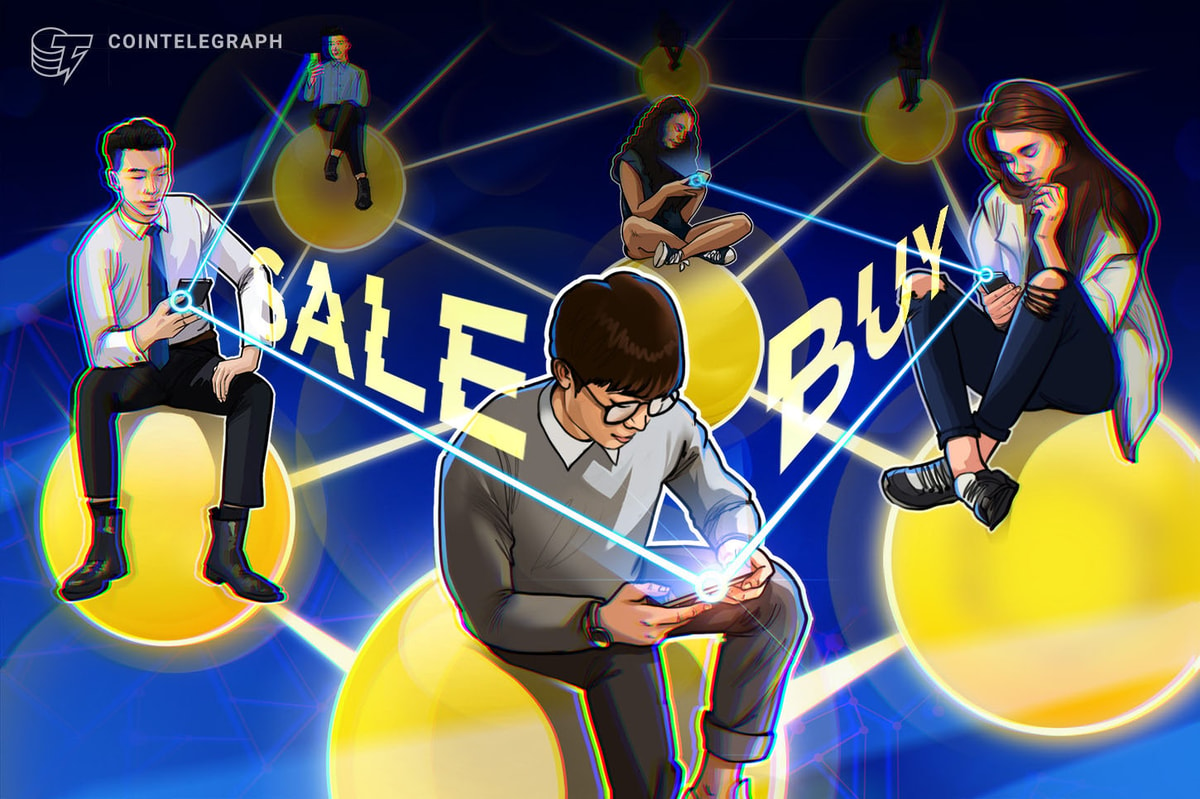Picture a classroom full of students chatting about last night’s homework, volleyball practice or their favorite YouTuber’s latest release. Now, imagine this in a virtual school environment with everyone online. Do the dynamics change?
An avatar-filled metaverse may seem like a potentially disruptive expansion to a classroom environment. But Kevin Chu, director of ViewSonic, purports a 3D immersive environment fosters healthy social interactions while reducing learning barriers for any kind of learning that happens online. Recently, EdSurge spoke with Chu about how a metaverse application benefits both teachers and students.
EdSurge: What problems in education is ViewSonic hoping to address with the launch of UNIVERSE?
Chu: Online learning has been growing over the past decade. Remote learners miss out on many key elements of in-person learning when using the tools currently available. The pandemic brought even more attention to this issue. Based on conversations we had with teachers, ViewSonic developed a solution to address their concerns when teaching online.
One of the biggest problems teachers expressed to us was that the students weren’t engaging online. When you’re on a video conference call, you can have only one person talking. You can take turns, but it’s very unidirectional. So, as long as somebody’s speaking, everyone else is just there sitting and listening, which means it’s difficult for students to engage.
In some cases, a teacher is instructing a class, and all students do is join the class, sit and listen for 40 minutes and then jump off at the end of the call. Students don’t feel like they are being heard, and if they aren’t heard, they disengage and aren’t learning.
UNIVERSE helps teachers solve the engagement problem with a metaverse concept—students and teachers can feel more present and participate in natural conversation. With spatialized audio, where you are in the virtual room dictates how loud you hear another person. So, students can approach and ask classmates questions about homework or notes without addressing the entire class, or they can build social bonds that they would otherwise be able to do in real life.
Teachers can divide students into discussion groups. Then, they can virtually walk around the room, approach one group and collaborate with that group. At the same time, they might hear a group getting into an argument across the other side of the room, and they can virtually walk to that group and mediate.
Teachers can also send students into breakout rooms and monitor them through a feature that recognizes whether or not students are engaged in discussions. And if they go completely silent, the teacher can then join and help instruct.
What other classroom management tools are available for teachers?
There’s a lecture mode in UNIVERSE. When class is about to start, the teacher can press that lecture mode button, and it will automatically have the students seated, their microphones muted and they have to pay attention. Teachers love that feature.
Sometimes it’s difficult for a teacher to figure out whether or not a student is engaged when they’re online or represented as avatars. We have an optional proprietary piece of software that runs in the background and doesn’t stream a camera feed. Instead, it takes multiple metrics and streams data back to the teacher, letting a teacher know whether or not a student is engaged. If a student is looking down at their phone for an extended period of time or has another application opened, the software will indicate that the student is disengaged.
How do students benefit from immersive learning environments like UNIVERSE?
One way is by personalizing their experience. Students can create a persona that they want to portray or feel comfortable in. We give them the tools to design their avatar identity and choose how they want to be viewed by the world. When they feel well represented, they are more likely to engage within their community. This creates more opportunities for peer-to-peer learning and can reduce student anxiety related to being on camera.
What we’re really trying to do here is break down barriers and allow students to be able to attend class regardless of where they are, to be able to participate in class in a meaningful way. The face of education is constantly changing, especially after COVID; we’re in a situation where a lot of students are not able to attend or are not comfortable with in-person school. So, we enable schools to address those students, as well as students who have historically been kind of underserved in the past—the students who had chronic health issues or maybe disciplinary issues and just couldn’t attend class, or students who needed additional schooling to help them get up to speed—they don’t need to be there physically in the classroom to really be able to engage.
How else might this product bridge diversity, equality/equity and inclusion gaps in education?
UNIVERSE is built to work on any platform, so it doesn’t matter if you or the school district have the money to buy a set of VR goggles. It’s really not about that. You can use any piece of hardware to get onto UNIVERSE. It could be anything from an Android device to an iPhone or a Chromebook or a MacBook. Whatever device you have, you bring that with you. The ability to let a student come in and do whatever they want, regardless of their background, and be able to communicate in a meaningful way, we felt like that was very, very important because education’s for everyone who wants to learn.
We addressed barriers as well by creating a very easy-to-use interface. The way that educators teach is exactly like they would on a video conference, but they communicate and manage a classroom as if they were in person. It felt intrinsically important that the application be as easy to use as possible to flatten that learning curve, so teachers don’t spend time learning a new way of teaching. Instead, they use what they currently have with the added tools; they enter a virtual world and are able to teach and conduct a class almost immediately. Teachers like that they can leverage this platform to encourage communication and collaboration—to increase interaction.
And, with UNIVERSE as a solution, you can bring in an instructor or lecturer from a different country. The ability to have special guests come in and connect to a class as if they were truly there opens many doors. So, you’re getting the best of both worlds—virtual and in-person.
Read More: news.google.com









 Bitcoin
Bitcoin  Ethereum
Ethereum  Tether
Tether  XRP
XRP  Solana
Solana  USDC
USDC  Dogecoin
Dogecoin  Cardano
Cardano  TRON
TRON  Lido Staked Ether
Lido Staked Ether  Wrapped Bitcoin
Wrapped Bitcoin  Sui
Sui  Wrapped stETH
Wrapped stETH  Chainlink
Chainlink  Avalanche
Avalanche  Stellar
Stellar  Hyperliquid
Hyperliquid  Shiba Inu
Shiba Inu  Hedera
Hedera  LEO Token
LEO Token  Bitcoin Cash
Bitcoin Cash  Toncoin
Toncoin  Litecoin
Litecoin  Polkadot
Polkadot  USDS
USDS  WETH
WETH  Monero
Monero  Bitget Token
Bitget Token  Binance Bridged USDT (BNB Smart Chain)
Binance Bridged USDT (BNB Smart Chain)  Wrapped eETH
Wrapped eETH  Pepe
Pepe  Pi Network
Pi Network  Ethena USDe
Ethena USDe  Coinbase Wrapped BTC
Coinbase Wrapped BTC  WhiteBIT Coin
WhiteBIT Coin  Dai
Dai  Bittensor
Bittensor  Aave
Aave  Uniswap
Uniswap  NEAR Protocol
NEAR Protocol  Aptos
Aptos  OKB
OKB  Jito Staked SOL
Jito Staked SOL  Ondo
Ondo  BlackRock USD Institutional Digital Liquidity Fund
BlackRock USD Institutional Digital Liquidity Fund  Cronos
Cronos  Tokenize Xchange
Tokenize Xchange  Ethereum Classic
Ethereum Classic